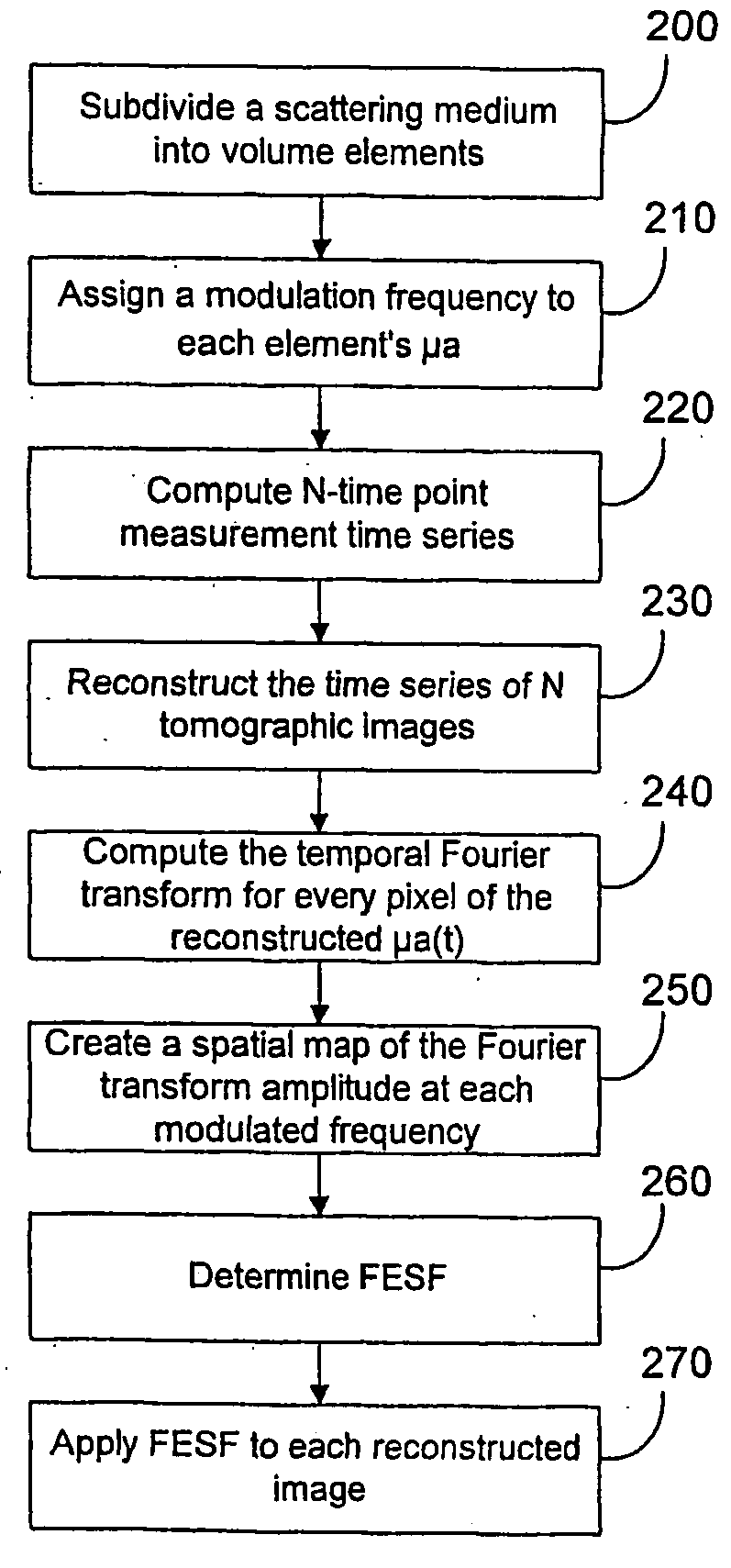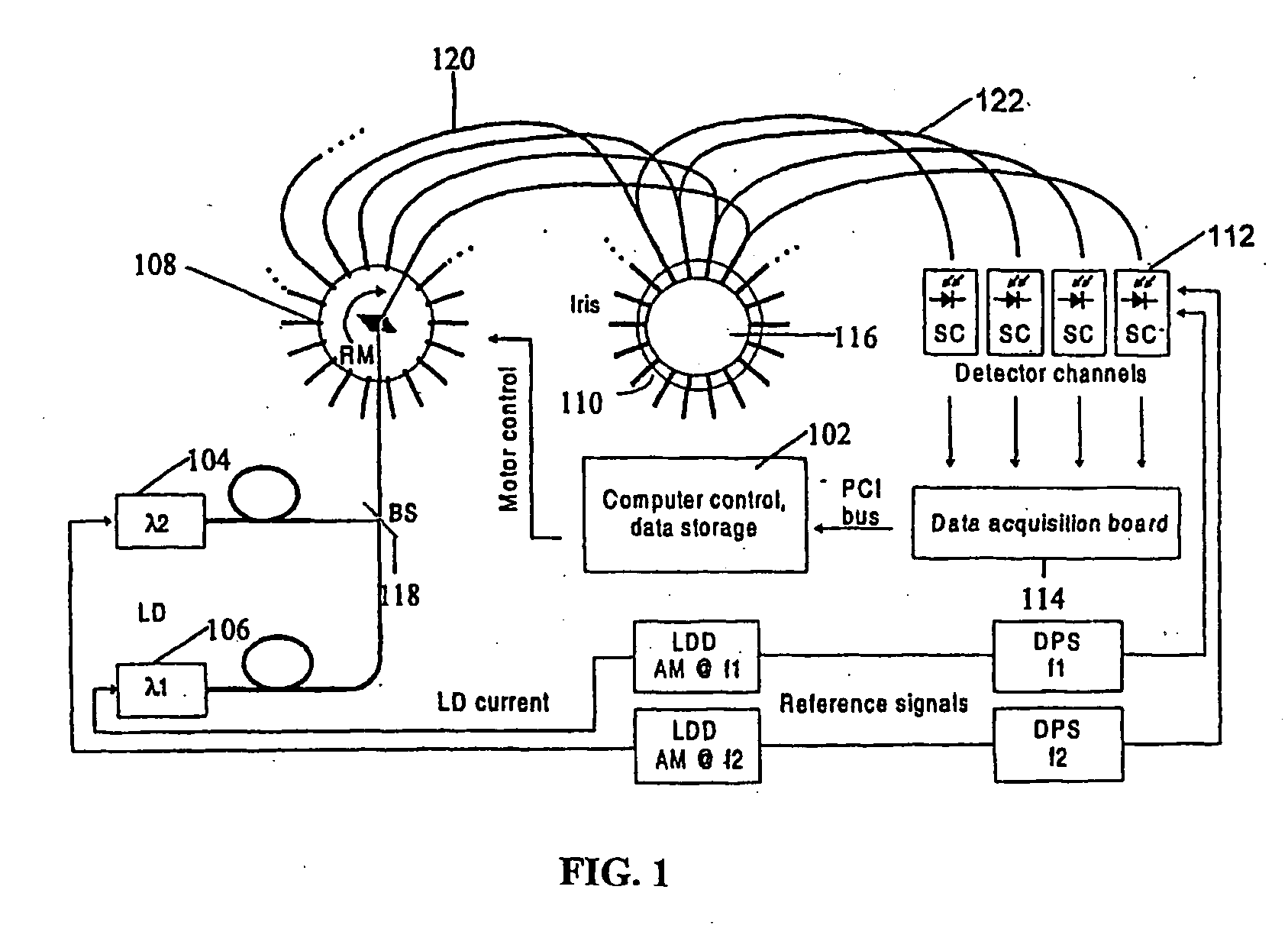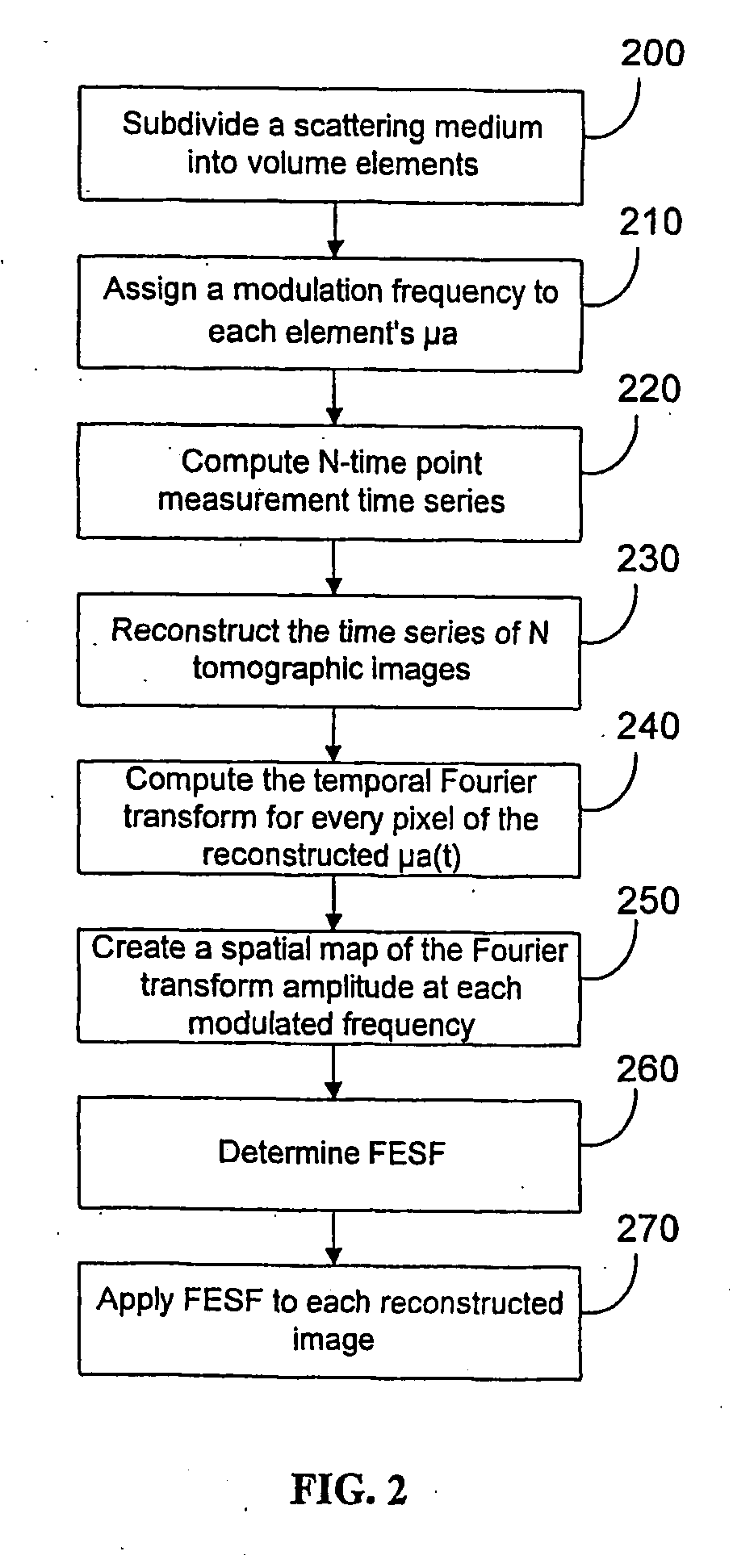Method and system for enhancing solutions to a system of linear equations
a linear equation and solution enhancement technology, applied in the field of linear equations, can solve the problems of inability to image structures using projection techniques, inability to distinguish and image blood oxygenation levels, and inability to achieve the effect of enhancing and improving the quality of reconstructed images
- Summary
- Abstract
- Description
- Claims
- Application Information
AI Technical Summary
Benefits of technology
Problems solved by technology
Method used
Image
Examples
Embodiment Construction
1. Introduction
The system and method of the present invention will be discussed in accordance with its application to the field of optical tomography. It is noted, however, that this methodology applies to a broad range of problems dealing with linear applications in which linear perturbation theory is applied to foster a solution such as economics, quality-control, epidemiology, meteorology, or the like.
Image reconstruction methods employ computation-intensive algorithms, which are modifications of a standard linear perturbation approach to image recovery. One of the factors that has made the development of these algorithms difficult in the past has been the absence of a way to quantitatively characterize the information spread function (ISF) associated with a given image reconstruction method. The term ISF used herein refers to the precise manner in which the optical coefficients that actually are present in a given location of a target medium are mapped into the spatial doma...
PUM
| Property | Measurement | Unit |
|---|---|---|
| volume | aaaaa | aaaaa |
| modulation frequency | aaaaa | aaaaa |
| optical coefficients | aaaaa | aaaaa |
Abstract
Description
Claims
Application Information
 Login to View More
Login to View More - R&D
- Intellectual Property
- Life Sciences
- Materials
- Tech Scout
- Unparalleled Data Quality
- Higher Quality Content
- 60% Fewer Hallucinations
Browse by: Latest US Patents, China's latest patents, Technical Efficacy Thesaurus, Application Domain, Technology Topic, Popular Technical Reports.
© 2025 PatSnap. All rights reserved.Legal|Privacy policy|Modern Slavery Act Transparency Statement|Sitemap|About US| Contact US: help@patsnap.com



